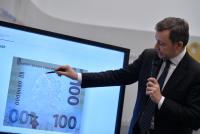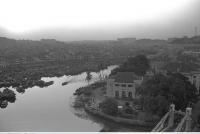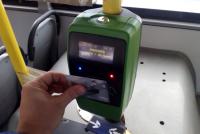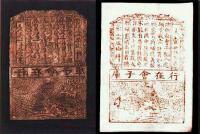Journal of operations 7. The order of formation of journals of operations and general ledger. Authorization log
Compiled by ____________ ________ _____________________ Checked by ___________ _________ _____________________
Explanations for the form
1. A cumulative sheet, as a rule, is used by preschool institutions (sanatoriums, rest homes, military medical units, units, institutions) to account for the receipt of food products during the month. Records are made on a daily basis based on primary accounting documents in quantitative and value terms. At the end of the month, the statement summarizes the results.
2. A cumulative list is drawn up for each materially responsible person, indicating suppliers, by name and, if necessary, by food codes.
3. The summary data on the materially responsible persons of the turnover sheet for non-financial assets (form according to OKUD 0504035) are controlled with the data of the account "Foodstuffs" of the general ledger (form according to OKUD 0504072).
ACCUMULATED STATEMENT N ________
by food consumption
┌───────┐
│ Codes │
├───────┤
Form according to OKUD │0504038│
├───────┤
for ____________ 20__ Date │ │
├───────┤
├───────┤
├───────┤
└───────┘
────────────────┬───────┬────────────────────┬──┬──┬──┬──┬──┬──┬──┬──┬──┬──┬──┬──┬──┬──┬──┬──┬──┬──┬──┬──┬──┬──┬──┬──
Products │Unit│ Numbers of the month │ │ │ │ │ │ │ │ │ │ │ │ │ │ │ │ │ │ │ │ │ │ │ │
food │measure-│ │ │ │ │ │ │ │ │ │ │ │ │ │ │ │ │ │ │ │ │ │ │ │ │
────────────┬───┤nia ├───────────────────┼──┼──┼──┼─ ─┼──┼──┼──┼──┼──┼──┼──┼──┼──┼──┼──┼──┼──┼──┼──┼──┼ ──┼──┼──┼──
name│code│ │ number │ │ │ │ │ │ │ │ │ │ │ │ │ │ │ │ │ │ │ │ │ │ │ │
│ │ │ content │ │ │ │ │ │ │ │ │ │ │ │ │ │ │ │ │ │ │ │ │ │ │ │
│ │ ├──────┬─────┬───────┼──┴──┴──┴──┴──┴──┴──┴──┴──┴──┴──┴──┴──┴──┴──┴──┴──┴──┴──┴──┴──┴──┴──┴──
│ │ │isras-│price │total, │ Amount of consumed food
│ │ │hodo- │ for │ rub., │
│ │ │vano │di- │ cop. │
│ │ │ │nitsu, │ │
│ │ │ │rub., │ │
│ │ │ │cop. │ │
────────────┼───┼───────┼──────┼─────┼───────┼──┬──┬──┬──┬──┬──┬──┬──┬──┬──┬──┬──┬──┬──┬──┬──┬──┬──┬──┬──┬──┬──┬──┬──
│ │ │ │ │ │ │ │ │ │ │ │ │ │ │ │ │ │ │ │ │ │ │ │ │ │ │ │ │
Total │ │ │ │ │ │ │ │ │ │ │ │ │ │ │ │ │ │ │ │ │ │ │ │ │ │ │
Attached are ________ pieces of menu requirements.
Compiled by ___________ _________ _____________________ Checked by ___________ _________ _____________________
(position) (signature) (decryption of signature) (position) (signature) (decryption of signature)
Explanations for the form
1. A cumulative sheet, as a rule, is used by preschool institutions (sanatoriums, rest homes, military medical units, units, institutions) to record food consumption during the month. Entries in it are made on a daily basis on the basis of primary accounting documents attached to the cumulative statement.
2. At the end of the month, totals are calculated in the cumulative statement and the cost of consumed food is determined. At the same time, the number of those who are content is checked: in child care institutions - with the data on the attendance of children; for military medical institutions - with information about the presence of patients.
3. A cumulative list is drawn up for each materially responsible person by name and, if necessary, by food codes. Based on the summary data of the cumulative statement, turnover sheet for non-financial assets (form according to OKUD 0504035), which is verified with the data of the account "Foodstuffs" of the general ledger (form according to OKUD 0504072).
4. The summary data of the cumulative statement at the end of the month is recorded in the journal of operations No. 7 on the disposal and transfer of non-financial assets (form according to OKUD 0504071).
animal registration
┌───────┐
│ Codes │
├───────┤
Form according to OKUD │0504039│
├───────┤
Opening date │ │
├───────┤
Closing date │ │
├───────┤
Institution ______________________________________________ OKPO │ │
├───────┤
Structural unit _______________________________ │ │
├───────┤
Financially responsible person __________________________ │ │
├───────┤
Account number │ │
└───────┘
┌───────┐
Animal species ____________________________________________ │ │
└───────┘
┌───────┐
Age group _______________________________________ │ │
└───────┘
CARD
quantitative and total accounting of material assets
┌───────┐
│ Codes │
├───────┤
Form according to OKUD │0504041│
├───────┤
Institution __________________________________________ by OKPO │ │
├───────┤
Structural unit ___________________________ │ │
├───────┤
Financially responsible person ______________________ │ │
├───────┤
Account name __________________________________ Account number │ │
├───────┤
Product name, type of equipment, │ │
parts, material ___________________________________ for KBT MO │ │
└───────┘
The card was filled in by ___________ _________ _____________________
(position) (signature) (transcript of signature)
"__" _______ 20__
Explanations for the form
1. The card is used for analytical accounting of material values \u200b\u200bused in the manufacture of experimental devices; objects of fixed assets (except for the library fund), issued for operation, with a value of up to 1000 rubles per unit inclusive, written off from the balance sheet of a military unit and recorded in the prescribed manner on off-balance sheet account 50 "Fixed assets written off from the balance sheet and in operation"; material assets issued for vehicles to replace worn-out ones; challenge awards, prizes, cups, valuable gifts and souvenirs; vouchers received free of charge (without full or partial payment) from public, trade union and other organizations; material stocks obtained in the order of centralized supply and intended for transfer to military units; inventory items accepted for safekeeping, including special equipment purchased for scientific research; non-financial assets in transit; inventories (with the exception of young animals and fattening animals), as well as leased fixed assets.
2. In the heading part, in the line "Name of products, type of equipment, parts, material", the code shall be indicated in accordance with the Classifier of weapons, military equipment and other materiel of the Ministry of Defense of the Russian Federation.
3. The card is kept: by name, quantity, value; for each object of the leased fixed asset - according to the inventory numbers of the lessor; for non-financial assets in transit - for individual suppliers; for inventory items accepted for safekeeping - for owner organizations; for raw materials and materials accepted for processing - for customers, types, grades of materials and their location.
4. Filling in the card begins by transferring the balance to the beginning of the year. Entries in the card are kept on the basis of primary accounting documents attached to the logs of transactions, in quantitative and value terms with the withdrawal of balances at the end of the period and are compiled for each financially responsible person separately.
On a monthly basis (if there are transactions), the card displays totals (turnovers) in the "Debit" and "Credit" columns.
utensil break registration
┌───────┐
│ Codes │
├───────┤
Form according to OKUD │0504044│
├───────┤
Opening date │ │
├───────┤
Closing date │ │
├───────┤
Institution _____________________________________________ according to OKPO │ │
├───────┤
Structural unit ______________________________ │ │
├───────┤
Financially responsible person _________________________ │ │
└───────┘
Explanations for the form
1. The book is used to register broken dishes in military units that include canteens and catering units.
The entries in the book are made by the appropriate officials.
2. A permanent commission monitors the correct keeping of the book and, on a quarterly (monthly) basis, draws up an act on the write-off of broken dishes, which is approved by the commander of the military unit.
I APPROVE REQUIREMENT MENU N _______
for dispensing food
Leader
institutions _________ ____________________
(signature) transcript of signature)
"__" ______________ 20__
┌───────────────────┬──────────┬───────────┬───────────┬───────────┬───────────┐ ┌───────┐
│ contented │ cost │ pleasure-cost │ cost, │ (quantity ├ ───────┤
│ (groups) │ one │ per │ for all │ rub., Kop. │ person) │ Form according to OKUD │0504202│
├───────┬───────────┤day, rub., │planned │ pleasure-│ │ │ ├───────┤
"Summar-" according to the planned "cop. │ cost │ to "__" _________ 20__ Date │ │
│nyh │ cost │ one day │rub., Kop. │ │ │ ├───────┤
│Category -One day │ │ │ │ │ │ Institution ______________________________________________ OKPO │ │
│riy │ │ │ │ │ │ │ ├───────┤
Structural unit _______________________________ │ │
│ 1 │ 2 │ 3 │ 4 │ 5 │ 6 │ 7 │ ├───────┤
├───────┼───────────┼─────────┼───────────┼────── ─────┼───────────┼───────────┤ Responsible person __________________________ │ │
│ │ │ │ │ │ │ │ └───────┘
├───────┼───────────┼──────────┼───────────┼───────────┼───────────┼───────────┤
│ │ │ │ │ │ │ │
├───────┼───────────┼──────────┼───────────┼───────────┼───────────┼───────────┤
│ │ │ │ │ │ │ │
└───────┴───────────┴──────────┴───────────┼───────────┼───────────┼───────────┤
└───────────┴───────────┴───────────┘
─────────────────────────┬─────────┬─────────────────────────────────────────────────────────────────────────────────────────────────┬──────────────────────
Food │ Unit │ Amount of food to be inserted │ Consumption of food
─────────────────────┬───┤measurements├────────────────────── ──────┬─────────────────────────┬───────────┬──── ──────────┬──────────────┤ power supply (quantity)
name │code│ │ breakfast │ lunch │ afternoon snack │ dinner │ for ├─────────────────────
│ │ │ │ │ │ attendant operation
│ │ │ │ │ │ │ staff │
│ │ ├───┬──┬───┬──┬───┬───┬──┬───┼──┬──┬──┬──┬──┬──┬──┬──┬──┼──┬──┬──┬──┼──┬──┬──┬──┬──┼───┬──┬───┬───┼──────────┬───────────
│ │ │ │ │ │ │ │ │ │ │ │ │ │ │ │ │ │ │ │ │ │ │ │ │ │ │ │ │ │ │ │ │ │
│ │ │ │ │ │ │ │ │ │ │ │ │ │ │ │ │ │ │ │ │ │ │ │ │ │ │ │ │ │ │ │ ├──────────┼───────────
│ │ │ │ │ │ │ │ │ │ │ │ │ │ │ │ │ │ │ │ │ │ │ │ │ │ │ │ │ │ │ │ on the staff
│ │ │ │ │ │ │ │ │ │ │ │ │ │ │ │ │ │ │ │ │ │ │ │ │ │ │ │ │ │ │ │ existing│
─────────────────────┼───┼─────────┼───┼──┼───┼──┼───┼───┼──┼───┼──┼──┼──┼──┼──┼──┼──┼──┼──┼──┼──┼──┼──┼──┼──┼──┼──┼──┼───┼──┼───┼───┼──────────┼───────────
Journal of transactions No. 7 is used to record transactions for the disposal and transfer of non-financial assets. The list of documents attached to this magazine is given in the recommendations.
To the journal of transactions of settlements with suppliers and contractors No. 4 are attached: contracts, invoices, invoices, acts, invoices, etc.
In your situation, an act of technical expertise (from a supplier) can be attached to magazine No. 4 or you can create a separate folder for such acts. The transfer of fixed assets to off-balance sheet accounting on the basis of an accounting statement is reflected in the journal for other operations, the act for writing off property from the off-balance sheet account can be filed to journal No. 99.
However, it should be borne in mind that Instruction No. 157n does not provide for keeping a journal of transactions No. 99 on off-balance sheet accounts. Therefore, develop the procedure for recording and storing documents on movement on off-balance sheet accounts yourself and approve in the accounting policy of the institution.
Legislation does not establish the procedure for the formation of magazines, therefore, the procedure for filing documents for magazines is fixed in the accounting policy of the institution.
Natalia Guseva, director of the Education Center and internal control institute additional professional education "International Financial Center", State Counselor of the Russian Federation, 2nd class, Ph.D. n.
Sergey Razgulin, actual state adviser of the Russian Federation of the 3rd class
Registers
Data from primary documents reflect in accounting registers... Registers are lists of transactions in chronological order, which are grouped by accounting accounts. They are kept in the form of books, magazines, cards. Such rules are established by Article 10 of the Law of December 6, 2011 No. 402-FZ, paragraph 11 of the Instruction to the Unified Chart of Accounts No. 157n.
Maintain the registers according to unified forms. If you have not found a unified form for a business transaction, you can develop it yourself. Fix your own registers in the accounting policy. This follows from paragraphs 6 and 8 of the Instruction to the Unified Chart of Accounts No. 157n.
Important! Make registers in in electronic format... Sign them electronically. And only if there is no such technical feasibility - draw up on paper (Methodical instructions approved by order of the Ministry of Finance of Russia dated March 30, 2015 No. 52n, clause 19 of the Instructions to the Unified Chart of Accounts No. 157n).
Read more about electronic documents.
Unified forms
The unified forms of accounting registers and instructions on how to fill them out were approved by order of the Ministry of Finance of Russia dated March 30, 2015 No. 52n. You cannot exclude columns, rows or columns from them, but add additional details can.
Supplemented uniform forms enter into the accounting policy by approving by order (decree) of the head.
Such rules are established in clause 7 of the Instruction to the Unified Chart of Accounts No. 157n, paragraphs 13, 16, 23 of the Methodological Instructions approved by order of the Ministry of Finance of Russia dated March 30, 2015 No. 52n.
Forms that you developed yourself
If the register form is not unified, the institution has the right to develop it independently. Also, forms that are configured in your accounting program can be used as registers. For example, turnover, account card, account analysis, etc. The main thing is that non-unified forms are approved in the accounting policy and include mandatory details:
- register name;
- the name of the institution;
- the date of the beginning and the end of keeping the register and (or) the period for which the register was drawn up;
- chronological and (or) systematic grouping of accounting objects;
- the amount of money and (or) natural measurement accounting objects with indication of the unit of measurement;
- names of positions of employees responsible for maintaining the register;
- signatures of employees who maintain these registers, indicating their names and initials or other details to identify these persons.
Such rules are established in paragraph 11 of the Instruction to the Unified Chart of Accounts No. 157n.
When registering accounting objects in registers, the following are not allowed:
- omissions or exemptions;
- reflection of imaginary and feigned accounting objects.
From reference books
What primary source to select for operation logs
Select primary documents for transaction logs chronologically: by dates of transactions, dates when you register a document. Do this at the end of the reporting period: month, quarter, year. *
What documents to select for magazines, fix in the accounting policy. The table contains the basic documents that will be needed for magazines.
|
Activity log |
Accounting account |
||
|
Journal of transactions with suppliers and contractors (f. 0504071) |
0.303.00.000 - for accrued personal income tax |
Supporting documents:
|
How to reflect in accounting and taxation settlements with suppliers and contractors |
|
Receipt order for the acceptance of non-financial assets (form 0504207) - regarding the receipt of property |
|||
|
Notice (f. 0504805) |
|||
|
Other documents on the basis of which the journal was compiled |
|||
|
Journal of transactions for the disposal and transfer of non-financial assets (f. 0504071) |
Documents on transactions with non-financial assets: |
How to take into account: Internal movement of the OS; OS repair; Disposal of property; Liquidation of the OS; Release of the Ministry of Health into operation; MH implementation |
|
|
Acts on acceptance and transfer of non-financial assets (f. 0504101); |
|||
|
Invoices for the internal movement of objects of non-financial assets (f. 0504102); |
|||
|
Acts of acceptance and delivery of repaired, reconstructed and modernized fixed assets (f. 0504103); |
|||
|
Acts on write-off of objects of non-financial assets (except vehicle) (f. 0504104); |
|||
|
Menu-requirements for the issuance of food (f. 0504202); |
|||
|
Notices (f. 0504805); |
|||
|
Requirements-waybills (f. 0504204); |
|||
|
Journal for other transactions (f. 0504071) |
0.207.00.000 and 0.301.00.000 - on revaluation of borrowings and accrual of interest 0.302.00.000- for pensions, benefits, other social benefits |
Papers not reflected in other journals: |
How to take into account the costs of manufacturing products (performance of work, provision of services); How to reflect in the accounting the receipt and disposal monetary documents |
|
Cashier's report on the stock office, with receipt (KO-1) and debit (KO-2) orders attached to it; |
|||
|
Notice (f. 0504805); |
|||
|
Accounting certificate (f. 0504833); |
|||
|
Calculation of planned and actual cost finished products; |
|||
|
other documents on the basis of which you compile the journal |
From forms
Application to accounting policies for accounting purposes. Activity log numbers
When you need it: when forming accounting policies... Assign numbers randomly. Including you can use the numbering from the accounting program.
|
Appendix 11 To order of 12/30/2016 No. 156 Activity log numbers
|
A single form No. 0504071 is used for all transaction logs.
The activity log can be opened from the item Operations main menu of the program. All documents that form accounting transactions are also included in this journal. If the flag was set in the general configuration setting Put all documents in the journal then this journal will also include such documents that do not form accounting transaction (such as Unconfirmed application, Power of attorney, payment documents and Personnel orders).
This journal is specifically designed for operations and has a number of features. For example, it is possible to split the journal into 2 sub-windows - for the list of transactions and for the list of transactions. current operation, why in the menu Actions you need to select an item Show transactions... In addition, for operations generated by documents, it is possible to open for editing not only the operation itself, but also the document that generated this operation.
The journal is interesting for its system of searching and selecting documents for various reasons. For organizations in whose accounting there are documents and operations that are not provided for by the standard set of the program, it is possible to enter such by creating standard operations. In the journal of operations, you can not only enter any document, but also create a new one by entering on the basis of another document. If in all other journals it is possible to form a register of documents for printing for any period of time, then in the journal of operations it is possible to form a register of documents for printing with postings generated by these documents.
In order to enter a typical operation in the operation log using the button Introduce a typical operation, you need to create a template for this operation.
Features of using the journal-order form accounting we considered in. In this article, we will tell you about the journal-order number 7.
What the journal order is used for 7
Journal-order No. 7 is used to record settlements with accountable persons (Letter of the USSR Ministry of Finance dated 03/08/1960 No. 63).
In this journal-order in unified system records are kept synthetic and analytical accounting for account 71 "Settlements with accountable persons".
Analytical accounting is carried out by the positional method for the amounts separately issued for the report. On a line by line basis, the advance paid, expense amounts based on the approved advance statement, and the unused advance refunded or overspend refunded are shown. So operations one at a time advance report are reflected only one line at a time.
To obtain synthetic data on account 71, the amount of expense for advance reports and the return of the unused advance is shown in the journal-order in correspondence with the debited accounts.
Journal Order 7: Sample Fill
The organization can develop the form of the journal-order number 7 independently, using the sample.
When automating accounting, journal-order No. 7 can be generated automatically on the basis of recorded transactions with accountable persons on account 71.
To fill in the journal-order No. 7, we present conditional data for October 2016 and assume that as of 01.10.2016, according to the approved advance report No. 62 of 22.09.2016, there is a debt of the office manager D.P. Nesterova. in the amount of 1,200 rubles, due to the fact that overly received on September 20, 2016 cash the worker hasn't returned yet:
| date | Operation | Account debit | Account credit | Amount, rub. |
|---|---|---|---|---|
| 06.10.2016 | Funds were issued from the cash desk to translator N.G. Zlotov. on a business trip | 71 | 50 "Cashier" | 12 000,00 |
| 11.10.2016 | The balance of the reporting amounts to D.P. Nesterova was returned. to the cashier | 50 "Cashier" | 71 | 1 200,00 |
| 14.10.2016 | Approved advance report No. 68 Zlotova N.G. on a business trip | 44 "Costs of sale" | 71 | 15 000,00 |
| 17.10.2016 | Overdraft was issued from the cash desk according to advance report No. 68 dated 10/14/2016 to NG Zlotov. | 71 | 50 | 3 000,00 |
| 19.10.2016 | Transferred from the settlement account to the storekeeper Y.V. Dronov advance payment for the purchase of household goods | 71 | 51 "Settlement accounts" | 2 500,00 |
| 21.10.2016 | Approved the advance report No. 69 Dronova Ya.V. | 10 "Materials" | 71 | 3 200,00 |






